Lava flow at Wolf volcano now 15 km (9.3 miles) long, Galapagos Islands
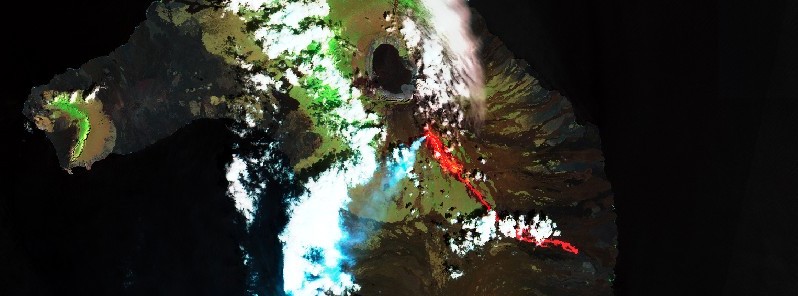
Lava flow produced by the eruption of Ecuador's Wolf volcano that started on January 7, 2022, is now 15 km (9.3 miles) long and less than 5 km (3.1 miles) from the coast. The last eruption of this volcano took place in 2015 (VEI 4)1 — it was its first eruption since August/September 1982 (VEI 1).
Environment Minister Gustavo Manrique made an over-flight over the eruptive area this week, confirming that eruptive activity at the volcano continues.2
Les comparto imágenes de lo que pudimos observar en primera línea tras la erupción del volcán Wolf en la Isla Isabela de Galápagos. Durante la visita comprobamos que la emblemática especie de la iguana rosada está libre de peligro. pic.twitter.com/ydsbB0ESxF
— Gustavo Manrique M. (@GustavoManriq_M) January 11, 2022
The lava flow is now 15 km (9.3 miles) long and is located less than 5 km (3.1 miles) from the coast, toward the east side of the island.
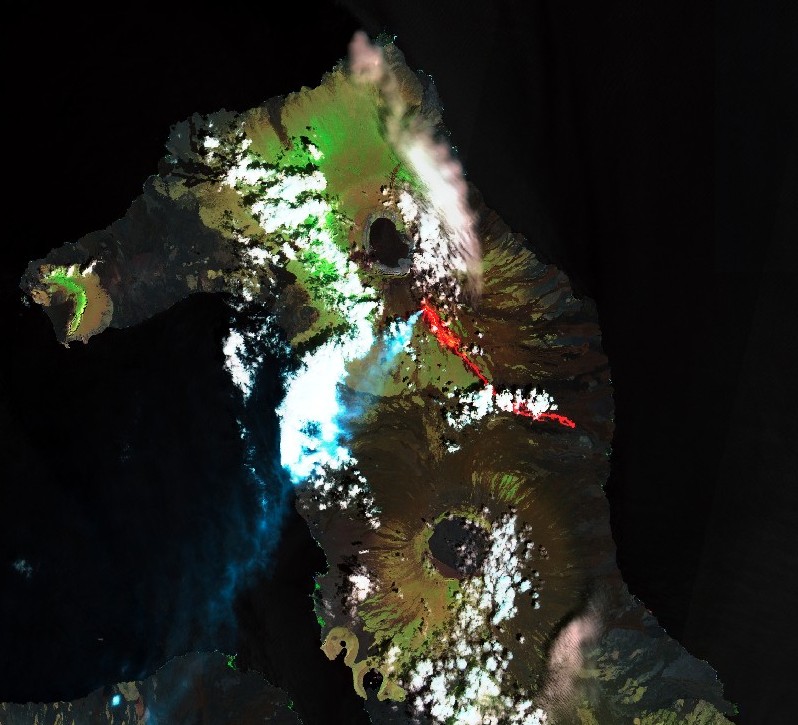
SWIR satellite image of Wolf volcano, Isabela, Galapagos Islands on January 11, 2022. Credit: Copernicus EU/Sentinel-2, TW
"The direction that lava flows and the general development of eruption, allows us to point out that the population of pink iguana, is kept out of danger," Manrique said.
The magma has traveled about 15 km (9.3 miles) since the beginning of the activity, moving through ancient lava fields of previous eruptions and over vegetation in the arid area of Galapagos.
"Species in the eruptive zone have evolved with these natural processes that are part of the normal dynamics of the ecosystem in Galapagos. The populations of iguanas, turtles and birds are located north of the volcano, where historically minor volcanic activity has been recorded," added Danny Rueda, director of the Galápagos National Park.
Volcanic eruptions are natural processes that originate from the Galapagos Islands.
The Ministry of Environment, Water and Ecological Transition continues to monitor this phenomenon to document changes that may occur in the ecosystem.
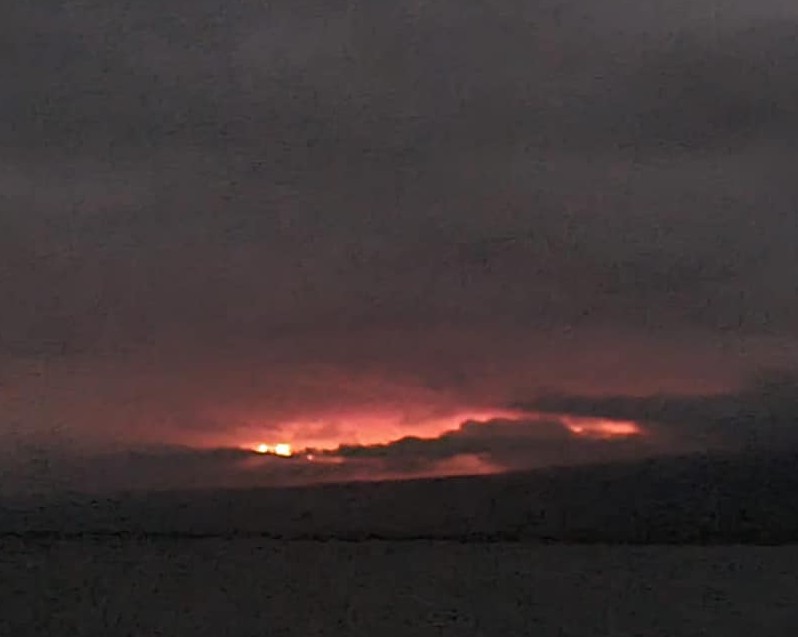
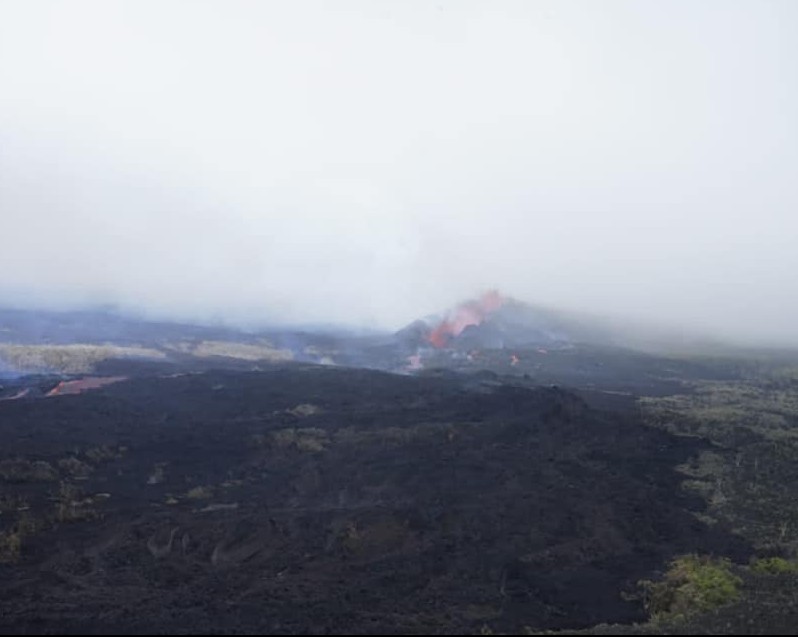
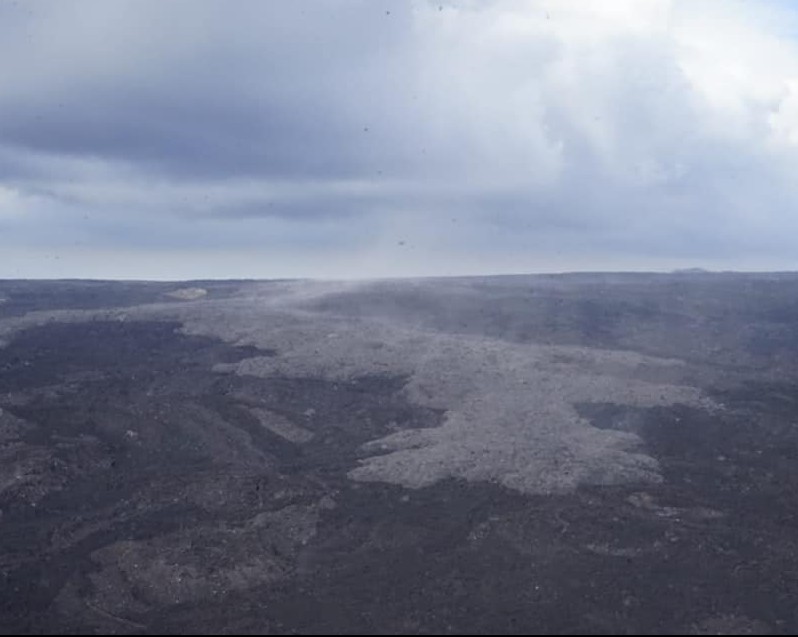
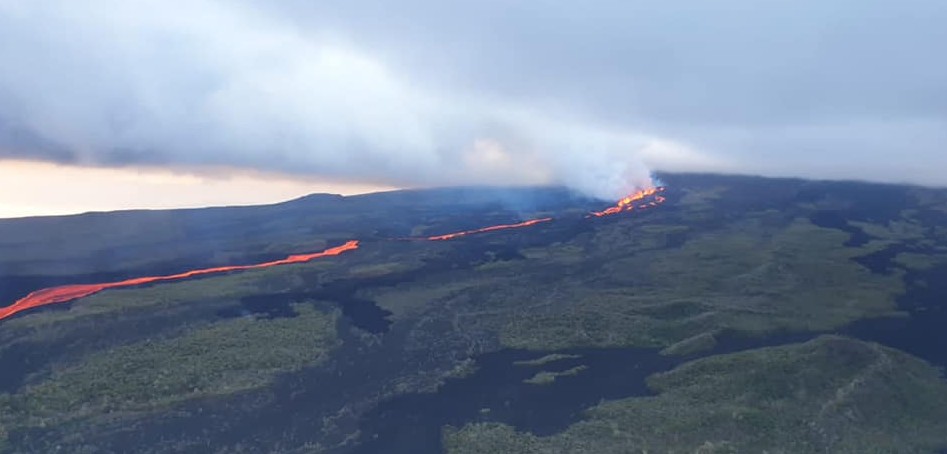
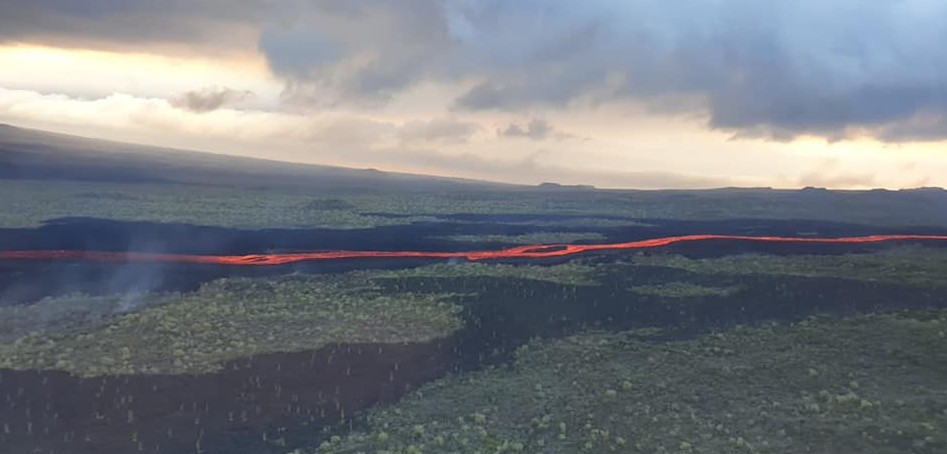
Images courtesy Parque Nacional Galapagos. January 2022
Geologic summary
Wolf, the highest volcano of the Galápagos Islands, straddles the equator at the north end of the archipelago's largest island, Isabela. The 1 710 m (5 610 feet) high edifice has steeper slopes than most other Isabela volcanoes, reaching angles up to 35 degrees.
A 6 x 7 km (3.7 x 4.3 miles) caldera, at 700 m (2 296 feet) one of the deepest of the Galápagos Islands, is located at the summit.
A prominent bench on the west side of the caldera rises 450 m (1 476 feet) above the caldera floor, much of which is covered by a lava flow erupted in 1982.
Radial fissures concentrated along diffuse rift zones extend down the north, NW, and SE flanks, and submarine vents lie beyond the north and NW fissures.
Similar unvegetated flows originating from a circumferential chain of spatter and scoria cones on the eastern caldera rim drape the forested flanks to the sea. The proportion of aa lava flows at Volcán Wolf exceeds that of other Galápagos volcanoes.
An eruption in 1797 was the first documented historical eruption in the Galápagos Islands.3
References:
1 Sudden eruption of Wolf volcano after 33 years of sleep, Galapagos Islands – The Watchers
2 Bulletin issued by Parque Nacional Galapagos on January 11, 2022
3 Wolf – Geological summary – GVP
Featured image: Wolf volcano, Galapagos Islands, Ecuador on January 11, 2022. Credit: Copernicus EU/Sentinel-2 (SWIR), TW

Commenting rules and guidelines
We value the thoughts and opinions of our readers and welcome healthy discussions on our website. In order to maintain a respectful and positive community, we ask that all commenters follow these rules:
We reserve the right to remove any comments that violate these rules. By commenting on our website, you agree to abide by these guidelines. Thank you for helping to create a positive and welcoming environment for all.